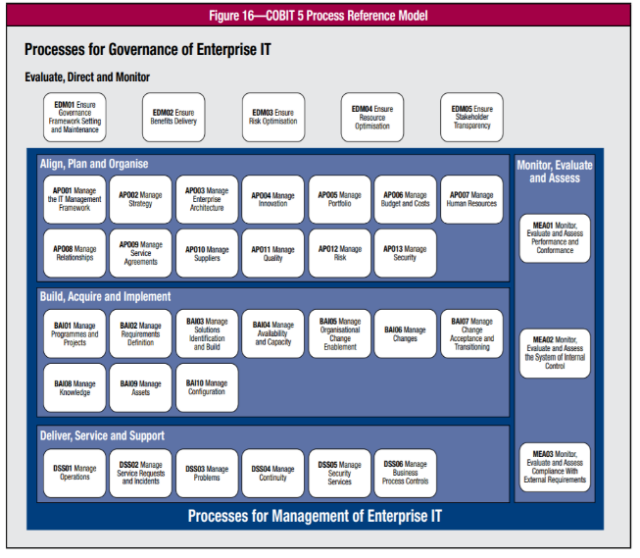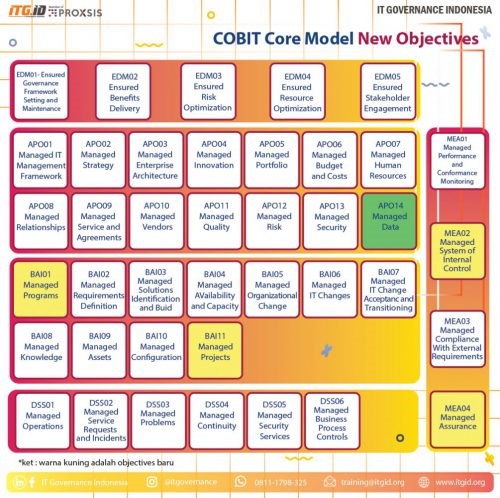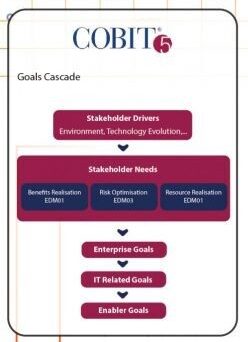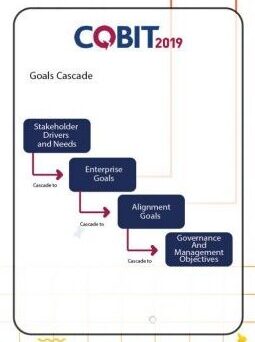COBIT 5 vs COBIT 2019
COBIT is an IT management framework developed by the ISACA to help businesses develop, organize and implement strategies around information management and governance. In 2012, COBIT 5 was released and in 2013, the ISACA released an add-on to COBIT 5, which included more information for businesses regarding risk management and information governance.
In 2018, ISACA announced and updated version of COBIT in to COBIT 2019. This updated version of COBIT is designed to constantly evolve with “more frequent and fluid updates,” according to the ISACA. COBIT 2019 was introduced to build governance strategies that are more flexible, collaborative and address new and changing technology.
COBIT 2019 defines the components to build and sustain a governance system with these seven components previously termed “enablers” in COBIT 5. Governance components in COBIT 2019:
- Processes
- Organizational Structures
- Policies and Procedures
- Information Flows
- Culture, Ethics and Behaviours
- Skills, People and Competencies
- Service, Infrastructure and Application
COBIT 2019 keeps the same five governance and management objectives as COBIT 5:
Source: ISACA (2018)
| Comparison scope | COBIT 5 | COBIT 2019 |
| Principle | – Meeting stakeholder needs
– Covering the enterprise end-to-end – Applying a single integrated framework – Enabling a holistic approach – Separating governance from management |
– Governance Systems:
· Provide stakeholder value · Holistic approach · Dynamic governance system · Governance distinct from management · Tailored to enterprise needs · End-to-End governance systems – Governance Framework: · Based on conceptual model · Open & flexible · Aligned to major standards |
| Product | – COBIT 5 Framework
– COBIT 5 Enabling Processes – COBIT 5 Implementation Guide |
– COBIT 2019 Framework: Introduction and Methodology
– COBIT 2019 Framework: Governance and Management Objectives – COBIT 2019 Design Guide: Designing an Information and Technology Governance Solution – COBIT 2019 Implementation Guide: Implementing and Optimizing an Information and Technology Governance |
| COBIT Core Model refers to governance& management objectives | 
In total, in COBIT 5 there are 37 governance and management objectives. |

In total, in COBIT 2019 there are 40 governance and management objectives. Additional in COBIT 2019: · Aligned APO14: Managed Data. · BAI01:Managed Programs (On COBIT 5 combined with manage projects) · BAI11: Managed Projects (On COBIT 5 combined with manage projects) · MEA04: Managed Assurance
|
| Goals Cascade |  |
 |
COBIT 5 need updating because the world also IT has changed in terms of both technology and industry trends every year. Since then, organizations needed to reflect changes in different frameworks and standards. COBIT 2019 builds on and integrates with new insights from science but also operationalizing these insights as practices, COBIT 2019 is not a minor revision. In IT audit community, COBIT as IT governance and management framework continues to establish itself as a globally accepted model.
Those who are implemented COBIT 5 will find lot of newest things in COBIT 2019. The update introduces some innovative concepts that users will need to understand and adopt. One of the new things in COBIT 2019 is called COBIT Performance Management (CPM), refers to how well your organizations governance and management system. With it considered an integral part of the COBIT framework.
References:
Anon., 2019. COBIT 5 vs COBIT 2019. [Online] Available at: https://itgid.org/ [Accessed 2019 09 2019].
Guy, J. t. I., 2019. COBIT 2019 – the Key Changes to COBIT 5. [Online] Available at: https://www.joetheitguy.com/ [Accessed 29 09 2019].
Lainhart, J., 2018. Introducing COBIT 2019: The Motivation for the Update?. [Online] Available at: https://www.isaca.org/pages/default.aspx [Accessed 29 09 2019]


